1. サマリー:好奇心を翼に変える家庭の魔法
子どもの口からこぼれる「どうして?」「なんで?」は、単なる好奇心の表れにとどまらず、学びのエンジンをフル回転させるスターターキーです。ところが、家事や仕事に追われる日常の中で、その質問を受け止めきれず「あとでね」で済ませてしまう場面も少なくありません。本ブログは、そんな忙しい保護者でも無理なく取り入れられる“問いの活かし方”を、最新の幼児教育研究と私自身の保育現場での実践例を合わせて紹介するガイドです。まず、質問を歓迎する態度が非認知能力(粘り強さや協調性、自制心などテストでは測れない力)を伸ばすという科学的根拠を示し、さらに年齢ごとの脳発達メカニズムと質問数の関係を解説します。加えて、正しい答えを即座に与えるのではなく、親子で「仮説を立てて一緒に検証する」対話デザインの手法や、図鑑・地球儀・計測器を戦略的に配置して家庭を“探究のラボ”に変える環境づくりも具体例つきで提案。さらに、質問が止まらず家事が進まない、答えがわからず困る、といった多忙ゆえに起こりがちな困りごとへの対処法もケーススタディ形式で詳述します。最後に、今日から実践できる3つの小さなステップ(歓迎のサインを出す、一緒に調べる、考えを言語化する)をまとめ、読者が子どもの問いを未来への翼に変える第一歩を踏み出せるようエールを送ります。この記事全体で目指すのは、親が“正解銀行”になることではなく、“共に考える探検隊の隊長”へと役割をシフトすることです。この一連の流れを親子で楽しむことが、最終的には学校教育だけでは得られない人生全体の“学び続ける力”へと昇華します。ぜひ家庭の会話を振り返り、どんな“なぜ?”が隠れていたか探してみてください。
2. 質問力が育む“非認知能力”
テストの点数や○×式の知識では測れない、粘り強さ・協働性・自己調整力といった“非認知能力”は、幼児期の質問体験の質と量に大きく左右されます。ハーバード大学が行った縦断研究では、3〜5歳で質問を歓迎された子どもは、10年後に学業成績は高く、集団でのリーダーシップ得点も高いことが示されました。親が「忙しいから後で」と頻繁に遮る行為は、学問好きの芽だけでなく社会的スキルの芽まで摘んでしまうリスクがあるのです。
質問を伸ばす鍵は“リフレクティブ・クエスチョン”の活用です。これは相手の思考を鏡のように映し返す質問技法で、たとえば「地震はどうして起こるの?」と聞かれたときに「君はどう思う?」「どんな仕組みがあると想像する?」と問い返すやり方。即答を避け、思考のボールを子どもに投げ返すことで、思考の持久力と自己効力感の両方を鍛えます。さらに「それをどう調べる?」「もし違ったら次に試す方法は?」とメタ質問を重ねると、子どもは自らの思考プロセスを言語化する習慣を獲得します。脳科学的には、納得の瞬間に放出されるドーパミンが快感記憶を形成し、再び疑問を探しに行く“好奇心ループ”を強化します。家庭で“問いのグラフ”を作り、1日の質問回数やジャンルを付箋で可視化すれば、子どもはメタ認知を働かせながら意欲的に質問を増やすようになります。
3. “なぜ?”が示す脳の発達ステージ
3歳頃から爆発的に増える“なぜ?”の背景には、前頭前野と側頭葉を結ぶシナプスネットワークの急成長があります。Piaget の発達理論では前操作期後半に位置づけられ、具体物を操作・観察するだけでなく、その背後にある抽象的な因果関係を推論し始める段階です。「雲はなぜ動くの?」は、見えない風の存在を仮定する高度な認知操作を示しています。
この時期に問いを歓迎されると、脳は“可塑性”が高い状態でシナプスを結び直し、因果推論ネットワークを強固にします。遮断され続けると、その接続は刈り込まれ探究回路の成長が鈍化することがMRI研究で示唆されています。親にできるのは、質問の背後にある思考を紙に絵を描く、簡単な実験をするなどして“可視化”すること。ペットボトルロケットを作れば空気圧と運動エネルギーの因果関係を体験できます。こうした体験が「わかった!」という達成感と結び付くと、ドーパミン受容体密度が上がり、新たな疑問を生み出す好循環が形成されます。敏感期は6歳ごろまで続き、小学校入学後の学習速度差を左右します。
4. 答えより“対話のデザイン”が大切
親が百科事典のように正確な答えを瞬時に提供する必要はありません。むしろ“共に考えるプロセス”こそが探究心を長持ちさせます。
- 巻き込み質問:「君はどう思う?」と返し、思考所有感を芽生えさせる
- 多択拡張:「ほかにどんな理由がある?」と発想を広げる
- 仮説→検証:実験計画を立てて一緒に試行錯誤する
この対話は“ソクラティック・メソッド”とも呼ばれ、教え込むのではなく引き出すアプローチです。親が「パパもわからない、一緒に調べよう」と間違いを認める姿を見せると、失敗を恐れない学習態度が伝染します。
5. 質問を生む家庭環境づくり
情報源の可視化:図鑑や虫眼鏡を低い棚に、古いスマホを“調べ専用端末”に
時間的余白:週1回の“ノープランデー”で即興学習を許す
親のロールモデル:“わからない”を宣言し検索プロセスを実況する
これらを組み合わせると家庭は“自律的学習のインキュベーター”へ進化し、質問の連鎖が親子の情緒的結びつきまで強化します。季節や子どもの興味に合わせて“展示内容”を入れ替え、常に新鮮な好奇心を刺激しましょう。
6. よくある困りごとと対処法
| 困りごと | NG対応 | おすすめ対応 |
|---|---|---|
| 質問が止まらず家事が進まない | 「静かにして!」 | タイマーを共有し「5分後に続きを聞かせてね」 |
| 難しすぎて答えられない | ごまかす | 「ママも知らない。一緒に調べよう」と検索を実況 |
| 同じ質問を繰り返す | 「さっき言ったでしょ」 | 「前は〇〇と言ったね。今日はどう思う?」 |
| “質問ノート”を用意し後で調べる仕組みを作れば、子どもは安心し親はタスク管理が楽になります。調べ終えたページにシールを貼る“修了式”で達成感を演出し、共有カレンダーに質問を記録して週末に“クエスチョンクイズ”を行えば世代間コミュニケーションまで活性化します。小さな仕組化が継続の鍵です。 |
7. まとめ:親子で問いを楽しむライフスタイルへ
ステップ1 目線を合わせ肯定ワードで歓迎
ステップ2 書籍・実物・ネットを組み合わせて一緒に調べる
ステップ3 “今日のなぜ?ジャーナル”で振り返る
このサイクルを回すうちに、子どもは自己主導学習者へと成長し、親も未知にワクワクする感覚を取り戻せます。完璧な答えより共に考えた時間が子どもの心に残ります。数年後、壁にぶつかったとき「まずは問いを立ててみよう」と自然に言えるなら、幼少期の問いの時間が根を張っていた証拠です。さて、あなたの家では次にどんな“なぜ?”が飛び出すでしょうか。答え探しの冒険は、今日もここから始まります。
Harnessing Children’s “Why?”: How to Answer Questions that Boost Learning Motivation
1. Summary: Turning Curiosity into Wings
Children’s endless “Why?” and “How come?” are not just signs of curiosity; they are the starter keys that rev up the engine of learning. Yet busy parents often respond with “Later, OK?” and unintentionally shut the engine off. This article offers research-based, field-tested ways to make the most of those questions—even in a hectic household. We show how welcoming questions boosts non-cognitive skills such as persistence, cooperation, and self-control; explain the link between brain development and question frequency; outline dialogue designs that let parent and child build hypotheses and test them together; and share case studies for common hurdles. Finally, you’ll get three small, actionable steps—signal welcome, investigate together, verbalize thinking—that turn every “Why?” into a ticket for future flight. The goal is not for parents to become a “bank of right answers,” but the captain of a joint expedition. Enjoy the journey and look for the hidden “Whys” in your daily talk.
2. Questioning Powers Up Non-Cognitive Skills
Qualities such as grit, teamwork, and self-regulation depend heavily on the quality and quantity of question experiences in early childhood. A Harvard longitudinal study found that three- to five-year-olds whose questions were welcomed scored higher a decade later both academically and in leadership measures. The key tool is the reflective question: bounce the thinking back—“What do you think?”—then layer meta-questions like “How could we test that?” The moment of self-discovery releases dopamine, wiring a “curiosity loop” that fuels lifelong learning. Try making a “question graph” on poster paper, logging the day’s questions by color-coded topic; children begin to monitor their own thinking, and motivation soars.
3. “Why?” and Brain Development
The explosion of “Why?” around age three mirrors rapid growth of synapse networks linking the prefrontal and temporal cortices. In Piaget’s terms, children move into late pre-operational thinking, able to infer unseen causes—wind that pushes clouds, for example. Encouraged questions strengthen these causal networks; constant shut-downs prune them. Visualizing thinking—drawing cause-and-effect arrows or doing a bottle-rocket experiment—ties abstractions to concrete experience and floods the brain with the dopamine that keeps curiosity cycling. This sensitive window lasts to roughly age six and shapes later learning speed.
4. Designing Dialogue over Delivering Answers
Parents need not be walking encyclopedias. What matters is the process of thinking together:
- Involve: “What do you think?” returns ownership.
- Expand: “Any other ideas?” stretches imagination.
- Hypothesize & Test: Plan and run simple experiments.
This mirrors the Socratic method—drawing ideas out rather than stuffing facts in. Admitting “I don’t know—let’s find out” models a fearless learning stance.
5. Building a Question-Friendly Home
Visible resources: picture books, globes, magnifiers at kid height; an old phone as a “search device.”
Time buffers: a weekly “no-plan day” invites impromptu inquiry.
Parental modeling: announce “I’m not sure; let’s search” and narrate the process.
Rotate materials like a living museum to keep curiosity fresh; the home becomes an incubator of self-directed learning and emotional bonding.
6. Common Hurdles & Practical Fixes
| Hurdle | Typical NG Response | Better Move |
|---|---|---|
| Endless questions halt chores | “Be quiet!” | Share a timer: “Tell me in 5 minutes.” |
| Too hard to answer | Bluff or dodge | “I don’t know—let’s look it up” (show the search) |
| Same question on repeat | “I already told you” | “Last time we said X—what do you think now?” |
Keep a question notebook for later research; add stickers when answered. Digital families can log questions in a shared calendar and run a weekend “question quiz,” even involving grandparents.
7. Conclusion: Living a Life of Shared Inquiry
Step 1 Welcome: eye contact and a positive phrase.
Step 2 Investigate: combine books, objects, and the web.
Step 3 Verbalize: a nightly “Today’s Why?” journal.
This cycle raises self-directed learners and rekindles parents’ own sense of wonder. Years later, if your child meets a problem and naturally says, “First, let me frame the question,” the roots were planted in these early conversations. What “Why?” will pop up in your home next? The adventure of finding answers starts today.




コメント